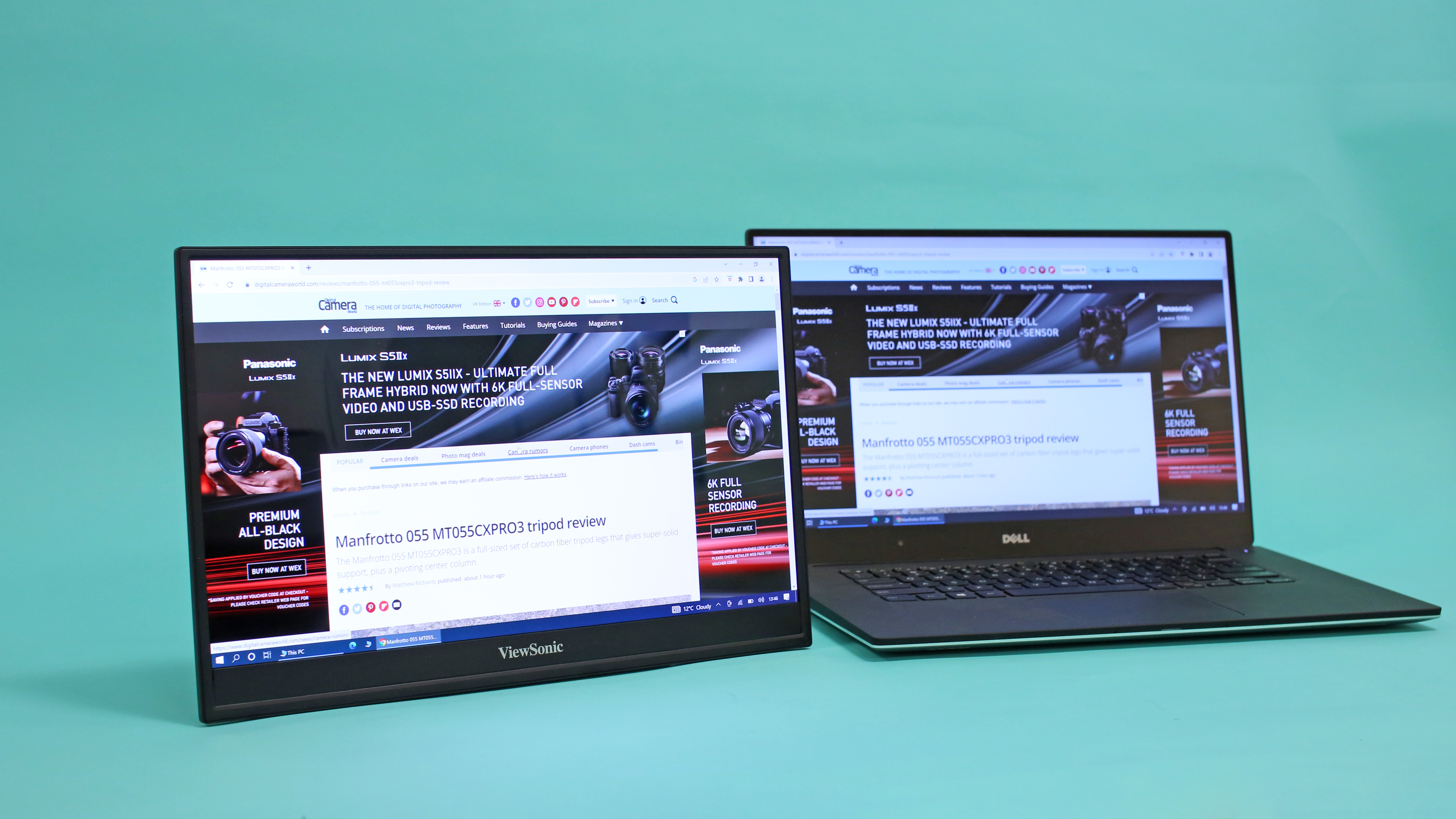
There’s no shortage of portable monitors that’ll extend your laptop’s display area with the least amount of fuss. Many are based around premium IPS LCD panels, so can produce decent image quality. So how do you make an impact in what’s now quite a crowded market? ViewSonic may just have the answer in the shape of its ColorPro VP16-OLED: one of very few portable monitors on the market based around an OLED display, rather than a conventional LCD panel.
This fundamental difference in screen technology gives the VP16-OLED the potential to leapfrog the competition, with superior color accuracy, brightness, contrast and uniformity. The end result is the VP16-OLED has all the ingredients to make it the very best portable monitor for creatives and imaging enthusiasts.
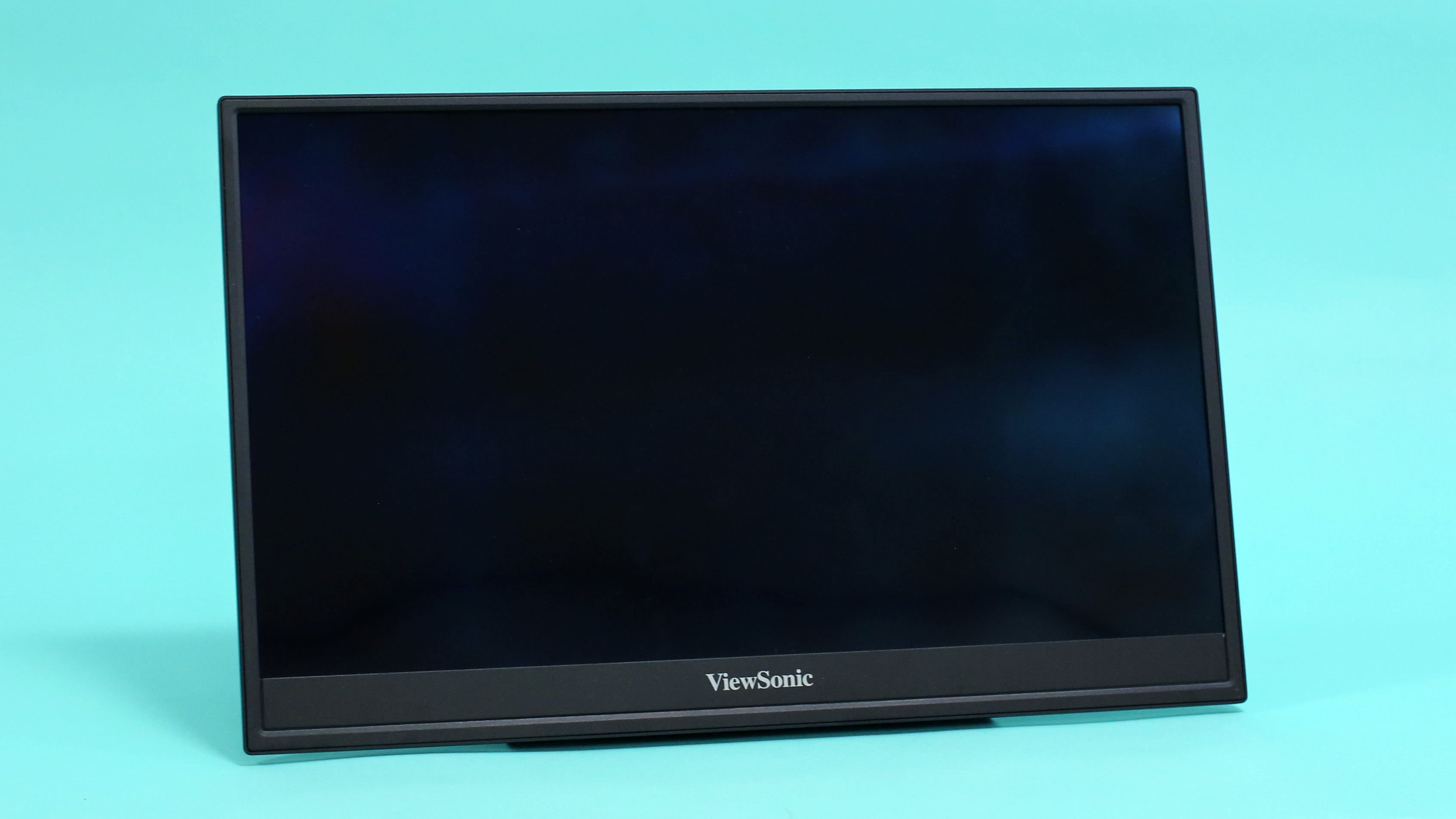
Specifications
Display area: 15.6 inches
Aspect: 16:9
Panel type: OLED
Panel bit depth: 10-bit
Display colors: 1.07 billion
Resolution: 1920 x 1080
Pixel density: 141 ppi
Refresh rate: 60Hz
Response time: 1ms
Brightness: 400 cd/m2
Contrast ratio: 100,000:1
Color space coverage: 100% sRGB, 100% Rec 709, 100% DCI-P3
Video inputs: Micro HDMI x1, USB-C x2
Key features
The standout feature of the VP16-OLED is of course its OLED screen tech. This enables each pixel in the screen to emit its own light, as opposed to an LCD panel which relies on a separate backlight that shines through the pixels to illuminate them. By cutting out this extra element, an OLED display is able to deliver better color accuracy, significantly better contrast, and much improved brightness and color consistency across the entire screen.
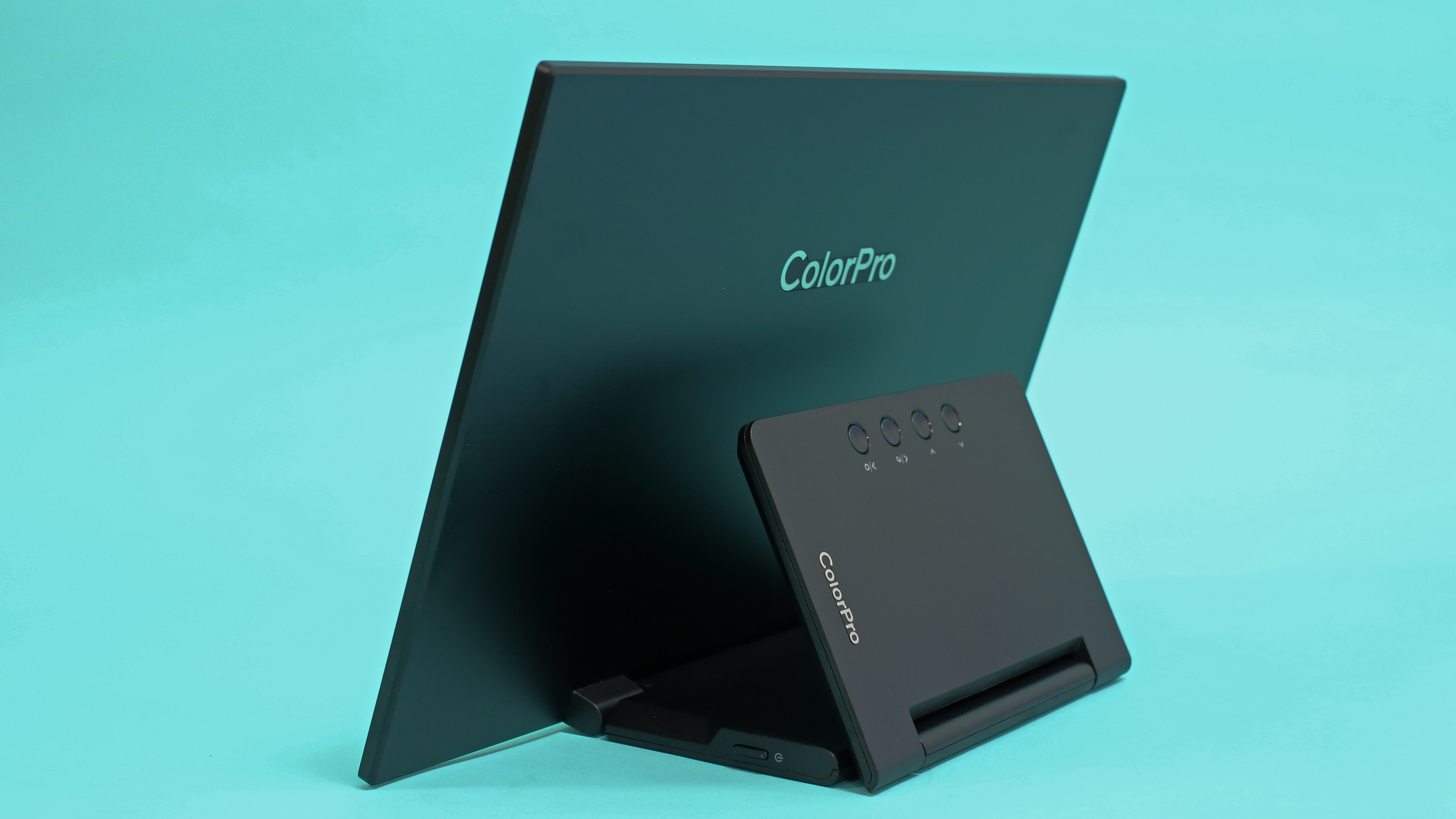
The OLED panel in the VP16-OLED is a 15.6-inch, 60Hz Full HD (1920 x 1080) display with a 400cd/m2 maximum brightness, 10-bit color gamut, 100,000:1 contrast ratio and some rather impressive color gamut coverage specs. These include 100% coverage of the sRGB, Rec.709 and DCI-P3 color gamuts, and 96% coverage of the AdobeRGB color space. The VP16-OLED is also factory calibrated to Delta E <2 - a feature usually reserved for high-end desktop monitors.
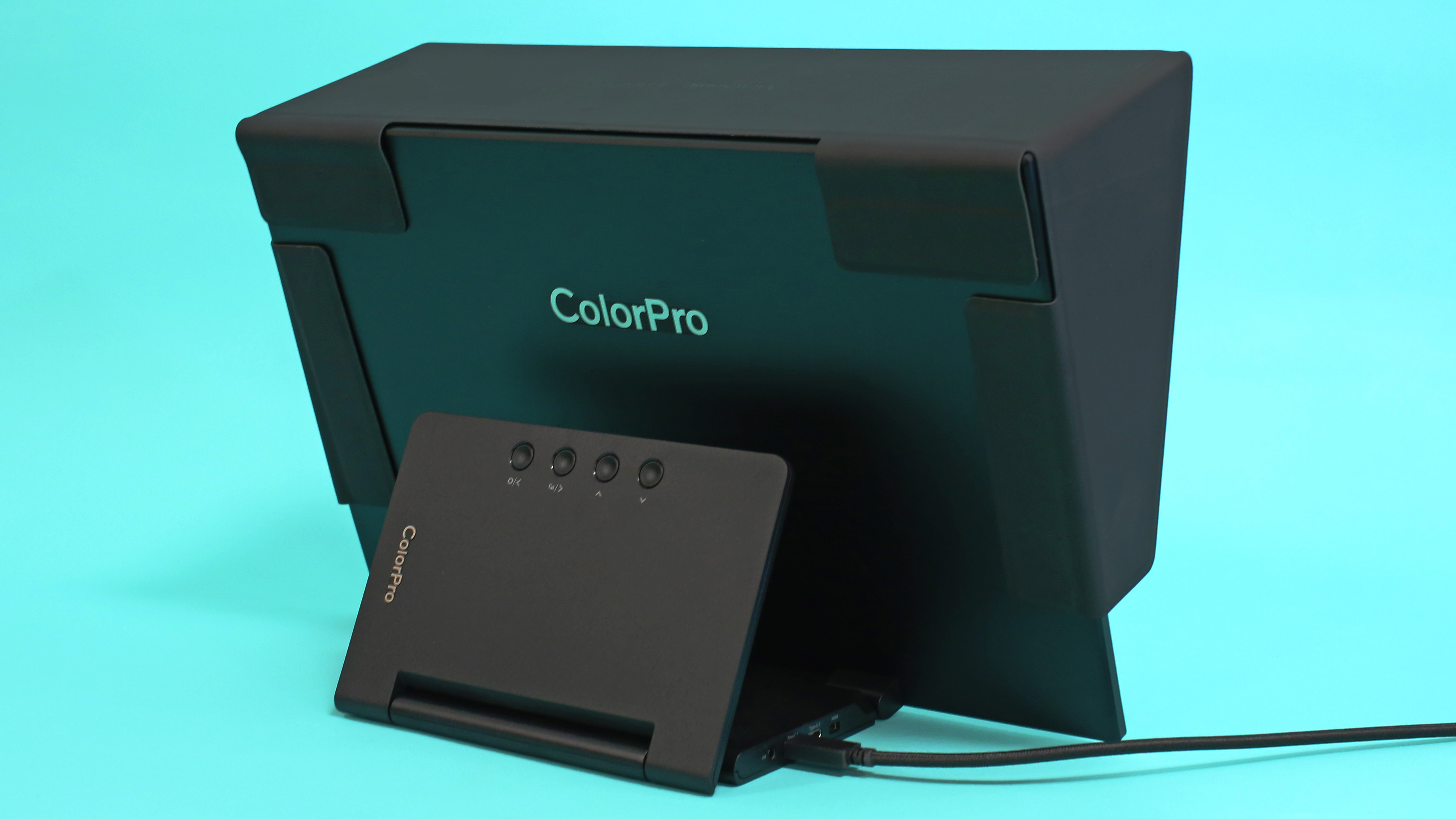
Elsewhere, the VP16-OLED features a clever multi-folding stand for improved ergonomics, plus Micro HDMI and dual USB-C video inputs. The latter is also capable of up to 40W pass-through charging, as the monitor comes with its own AC adaptor enabling it charge an attached laptop or smart device if needed (the AC adaptor isn't necessary for typical use).
Build & handling
When not in use, the display panel of the VP16-OLED looks much like any other portable monitor - a 16:9 black plastic panel, with no indication of the rather special display tech within. More notable is the clever stand that’s incorporated into the back. Its folding design allows the panel to be propped up with the bottom bezel resting on the ground - nothing unusual about that, and in this configuration the screen can line up nicely alongside a laptop display. But flip the stand the other way and the monitor can be raised up higher, making it comfortable to use alongside a standalone desktop monitor. The stand also has a tripod mounting socket should you want to use the monitor in a studio setting alongside your camera, and if you extend both sections of the stand out straight, it’ll even prop the screen in a portrait orientation.
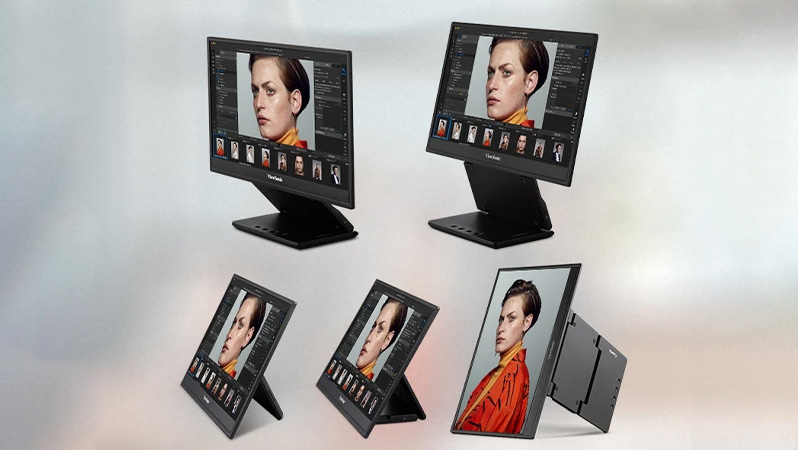
A row of four buttons on the stand control the monitor’s on-screen display. These are easily accessible when the stand is positioned in its lifted position, but fold the stand away from you so the screen sits lower and the buttons then face backward and you’ll have to feel your way around them. ViewSonic’s menu system is the same style as that used in its full-size desktop ColorPro monitors and includes a full range of options like color gamut pre-sets and extensive image quality adjustment - the VP16-OLED offers much more customization than your average portable monitor.
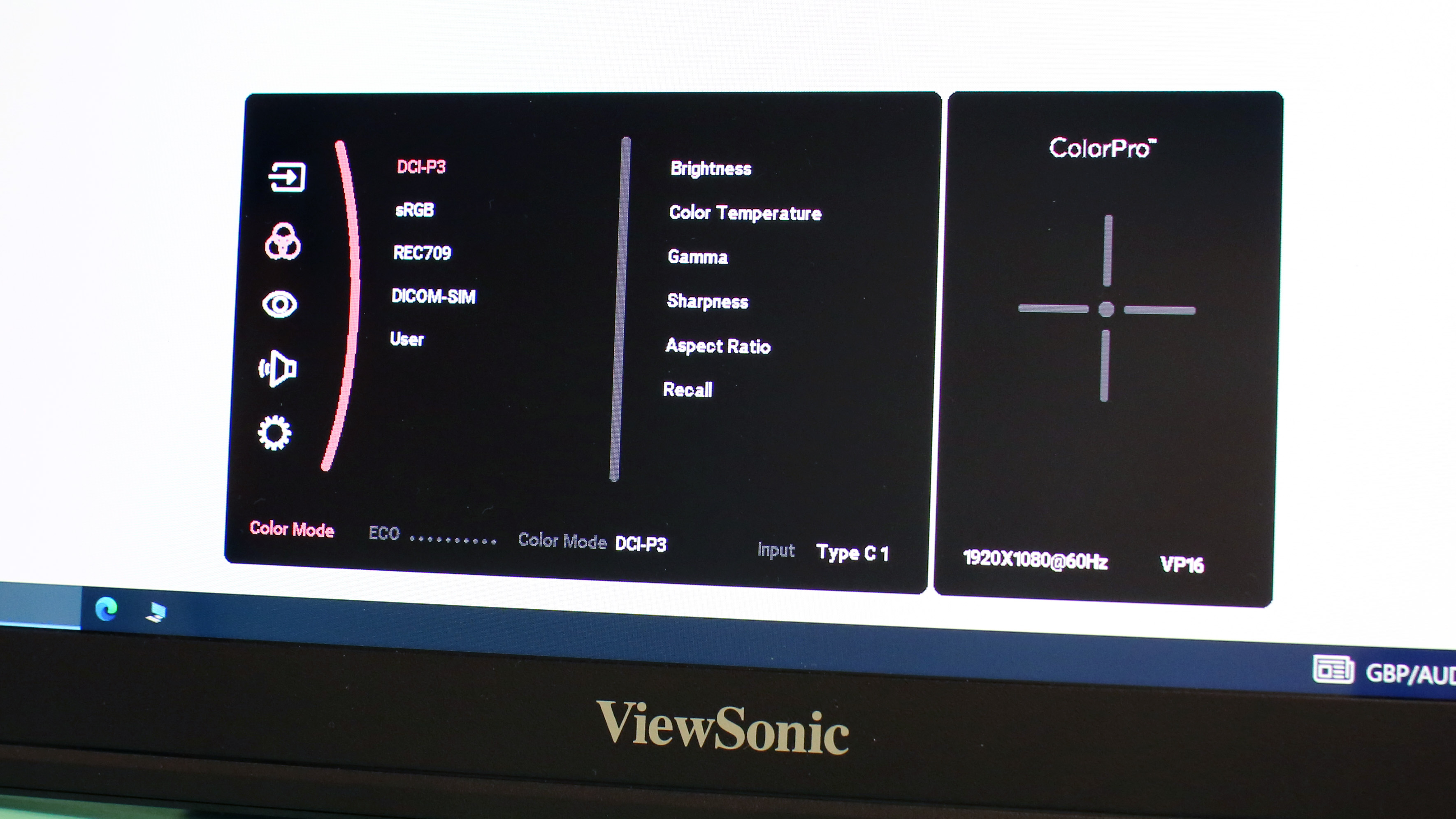
Video input ports are on the left edge of the stand, and next to these is a 3.5mm audio input, as the VP16-OLED has integrated stereo speakers. The power button is situated on the right-hand edge of the stand.
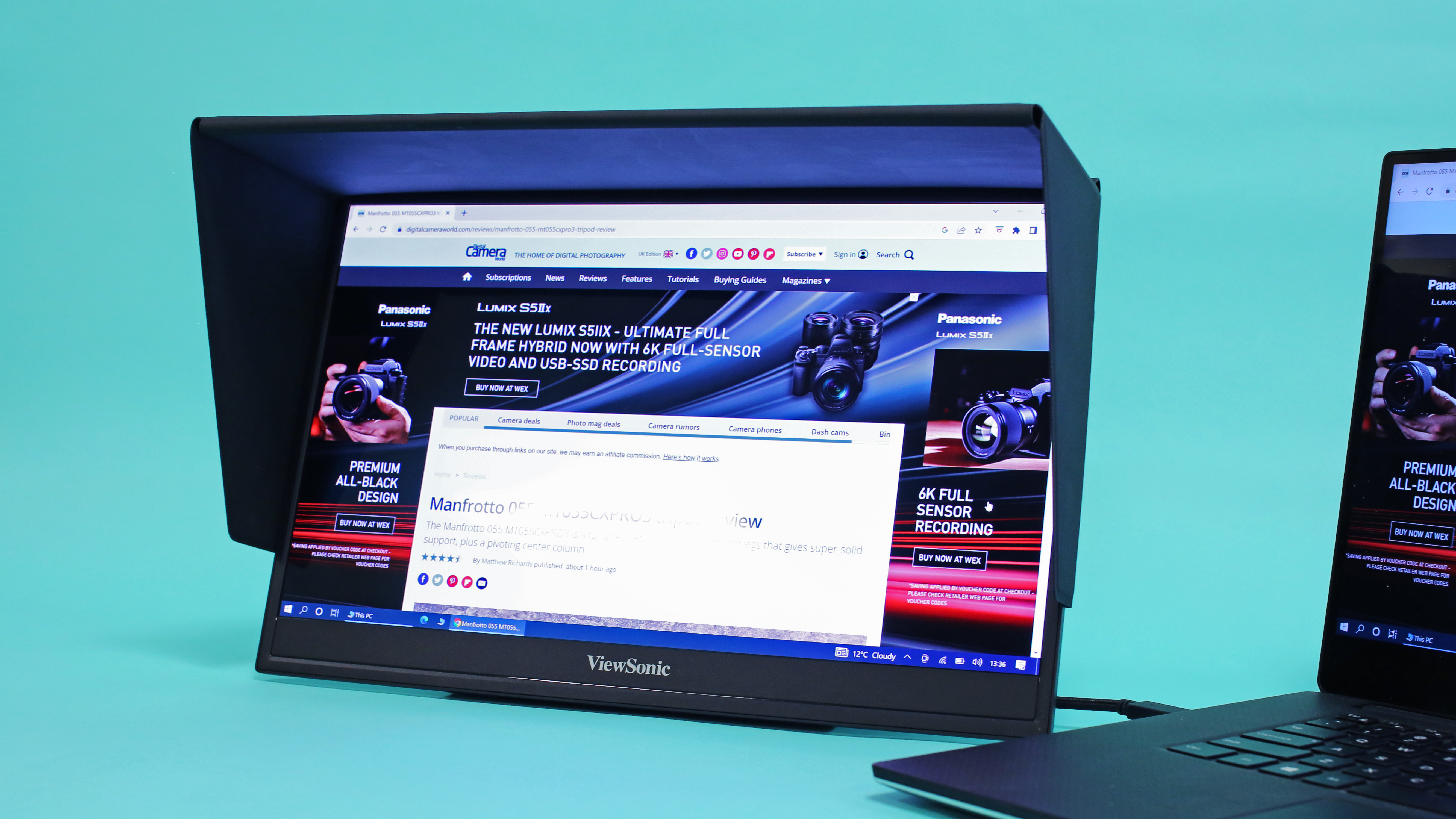
And if the special stand wasn’t enough, ViewSonic also includes a hood shade that neatly folds into shape and attaches to the screen magnetically. It’s a useful extra for preventing screen reflections if you’re working under harsh ambient lighting, and usually something only found with premium desktop monitors.
Performance
Firing up the VP16-OLED is as simple as connecting the included USB cable from your laptop to the screen. (USB-A and USB-C cables are in the box). Then, providing your laptop’s USB-C socket can output enough power, the monitor will run via that single cable - no extra power connection required.

Once up and running, you’re then treated to the OLED effect. The level of contrast and color saturation is unlike any LCD display - it’s an altogether punchier, more vibrant viewing experience. The lack of a separate screen backlight means any black sections of an image really are completely black and don’t ‘shimmer’ as they would when viewed on an LCD screen. This isn’t to say the difference between the two screen technologies is night and day: rather, the VP16-OLED offers a subtle yet clearly noticeable improvement over a well-sorted IPS LCD portable monitor.
However, to get an objective assessment of the VP16-OLED’s image quality, you need more than a subjective human viewpoint. So we broke out our DataColor Spyder X Elite monitor calibrator to really put the VP16-OLED through its paces.
Lab results
Color gamut:
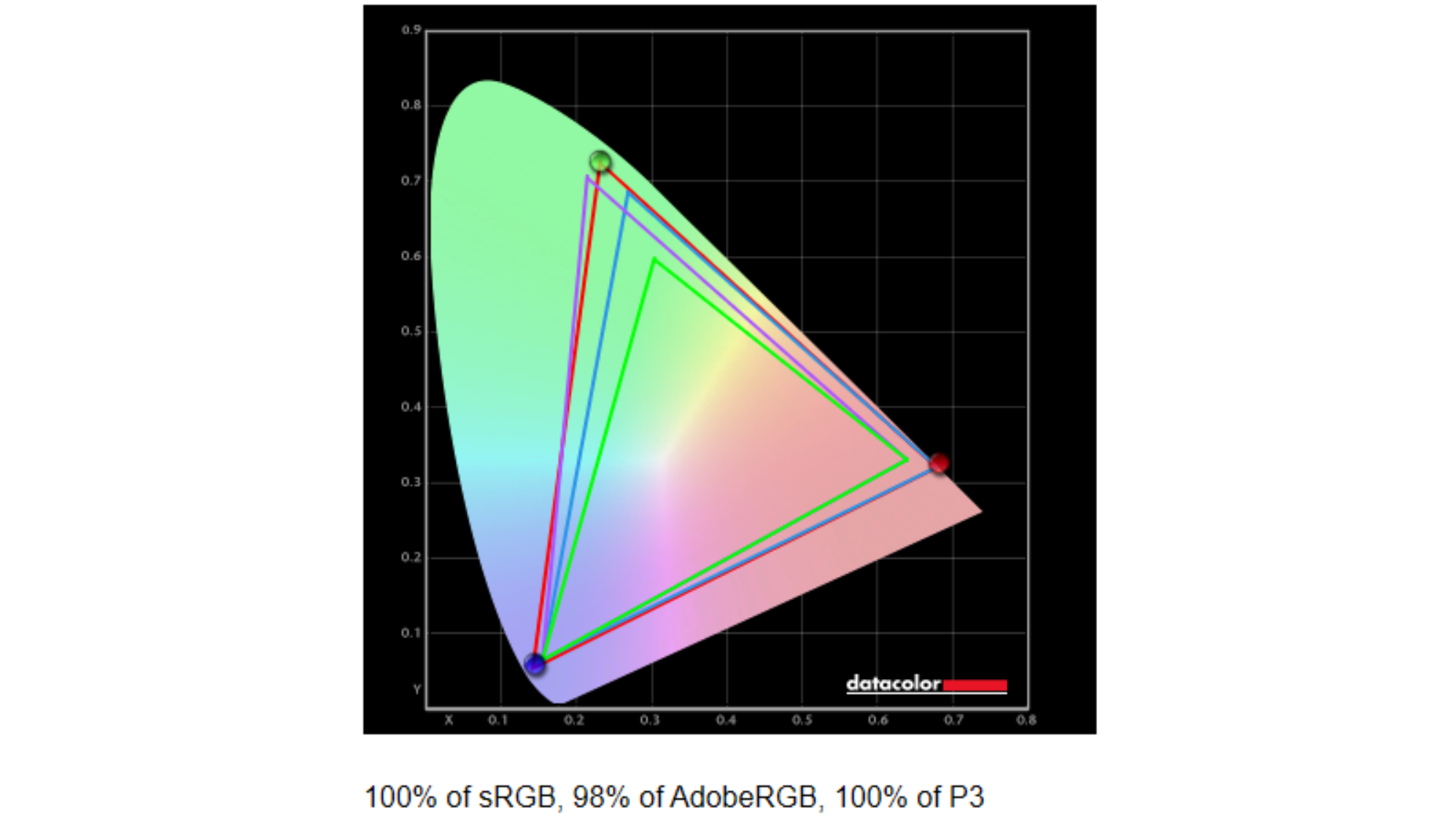
ViewSonic claims 100% coverage of the sRGB and DCI-P3 color gamuts, and we concur. What’s more, though the VP16-OLED is advertised as having 96% AdobeRGB coverage, we measured it as 98% - impressive stuff.
Brightness and contrast:
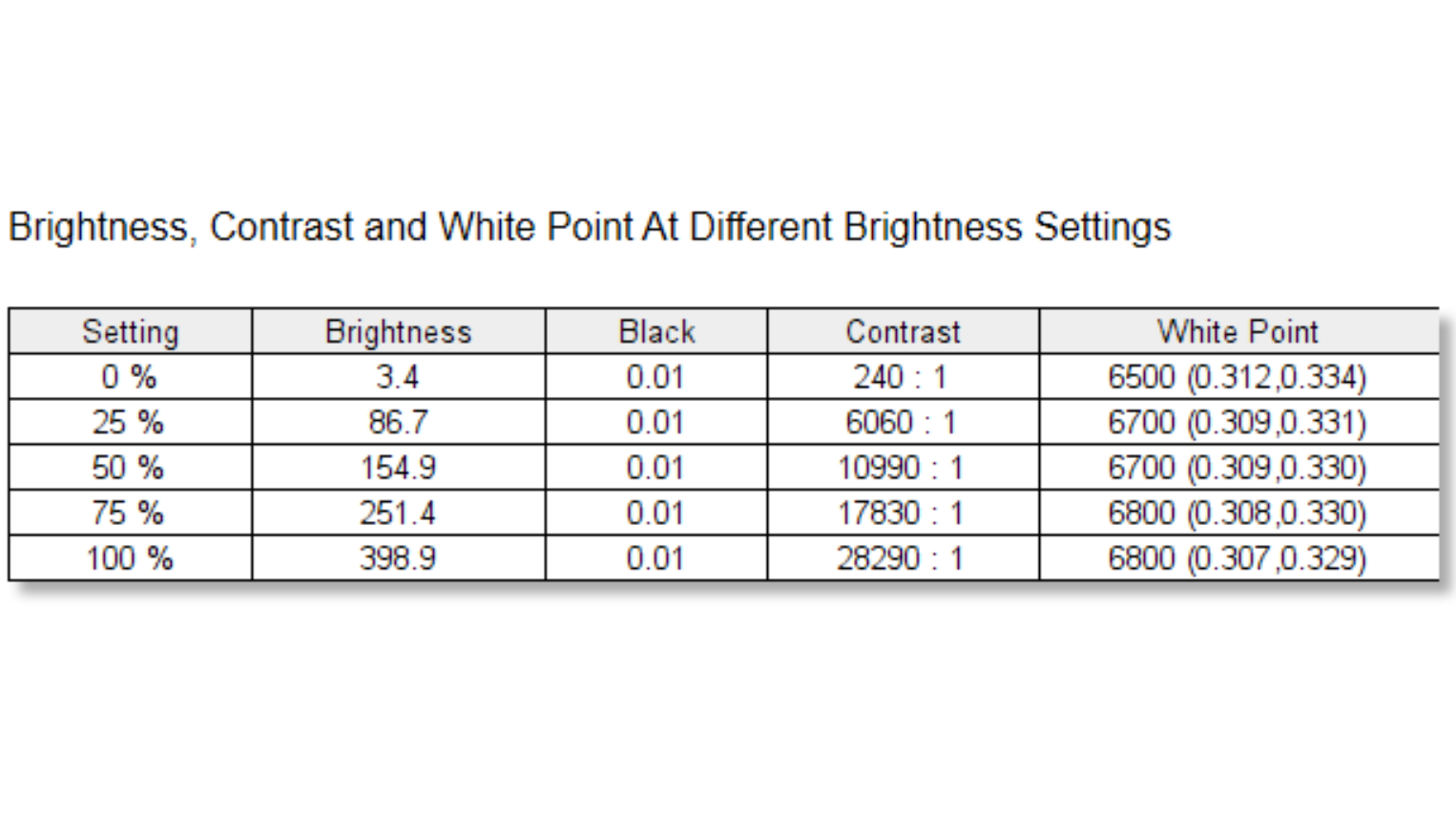
A 398.9cd/m2 maximum measured brightness is almost identical to the advertised 400cd/m2 figure.
Color accuracy:
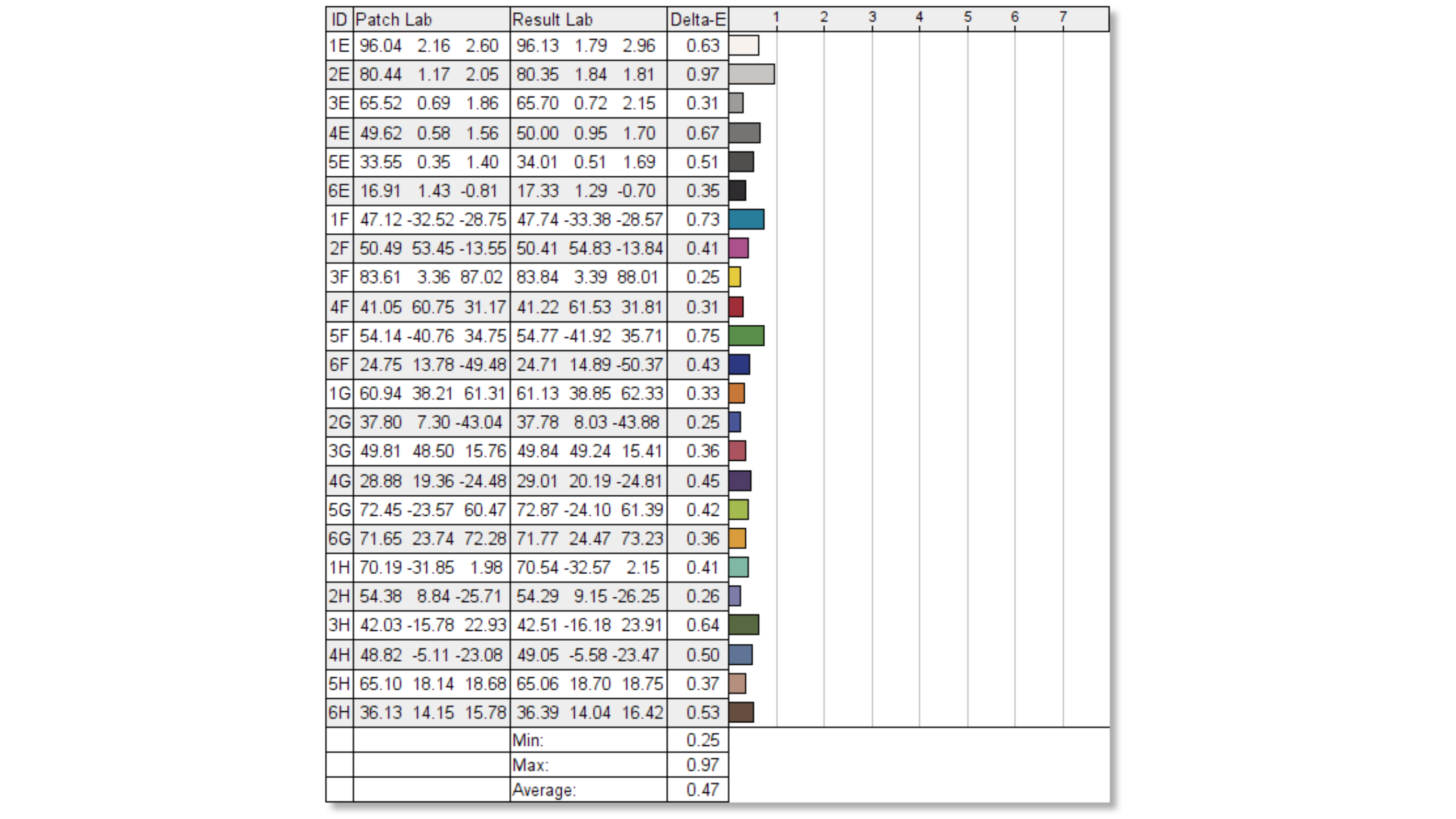
OLED monitors are a force to be reckoned with when it comes to color accuracy, and even the little VP16-OLED is no exception. A Delta-E average of 0.47 (values closest to zero are better) is one of - if not the - best color accuracy result we’ve ever recorded from any monitor, and is significantly better than even ViewSonic’s advertised Delta E <2 accuracy for the VP16-OLED. What’s more, where some monitors can have one particular color that’s noticeably inaccurate (usually cyan, to give the display a cool overall hue) yet still produce an low average Delta-E score thanks to the other tested colors being accurate enough to compensate for the single inaccurate color, every single tested color is less than Delta-E 1.
Luminance uniformity:
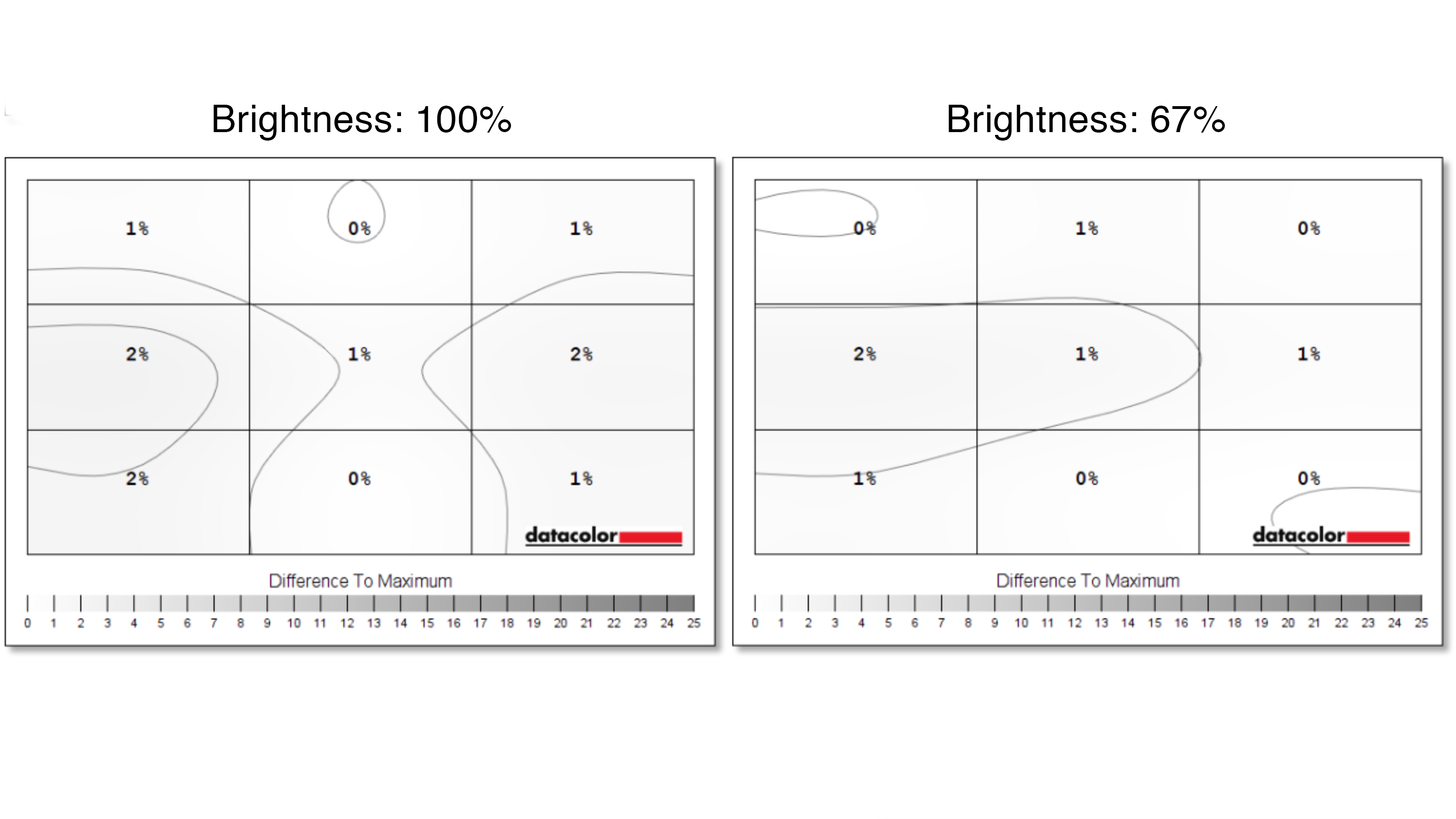
Luminance uniformity simply indicates the consistency of brightness across 9 screen regions. Thanks to being an OLED panel, the VP16-OLED scores very well indeed, recording just a 2% difference in brightness between the brightness and dimmest screen region with overall brightness set to 100%. With brightness reduced to 67%, uniformity remains just as even.
Color uniformity:
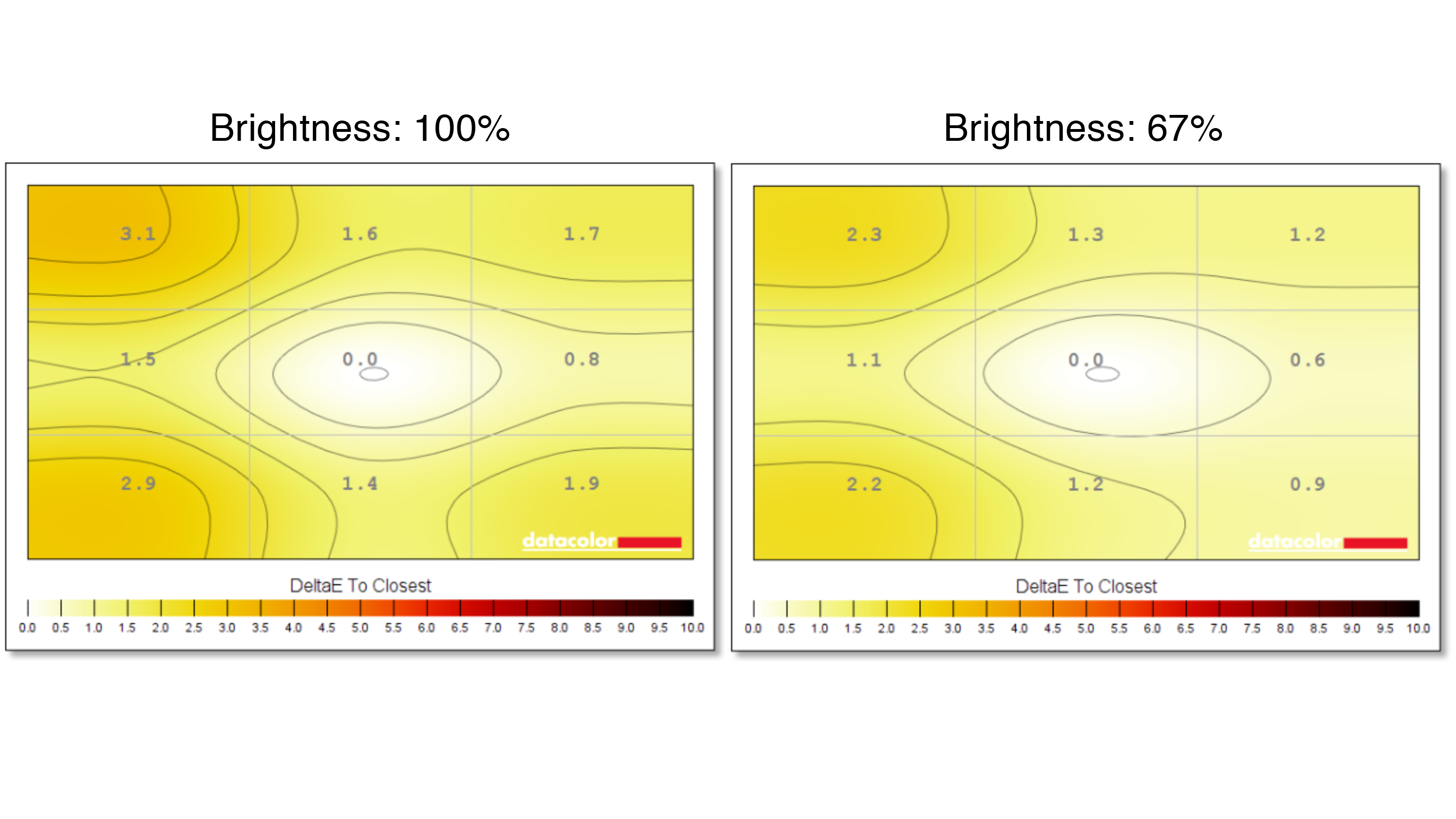
Color accuracy can fluctuate when you move away from the center of the screen, so this test measures how consistent color is in 9 regions spread across the display. Once again, the VP16-OLED performs very well indeed. With brightness set to 100%, we recorded a Delta-E of just 3.1 (values closer to zero are better) between the most and least color-accurate regions. This drops still further, to 2.3, with brightness set to 67%.
Verdict
Let’s not mess about - the ViewSonic ColorPro VP16-OLED deservedly becomes the best portable monitor on the market right now. Its combination of class-leading image quality, a carefully considered and highly versatile stand design, plus decent connectivity and plenty of extra features means there are no weak links or compromises here - the VP16 is everything a creative could want from a portable monitor.
Of course, all this was never going to come cheap. At USD $399.99 the VP16-OLED isn’t just the best portable monitor you can buy, it’s also one of the most expensive. It’s fair to say a decent IPS LCD portable monitor will satisfy the vast majority of users, and for around half the price. But if you want a portable monitor that’ll do full justice to one of the best OLED laptops - or indeed one of the best laptops for photographers - the VP16-OLED will perform spectacularly well.
Read more:
The best photo editing tools and accessories
The best NAS drives
The best cameras you can buy right now
The best monitor calibrators
The best photo editing software
The best desktop computers for photo editing
The best ultrawide monitors for photo editing
Best video editing monitors







